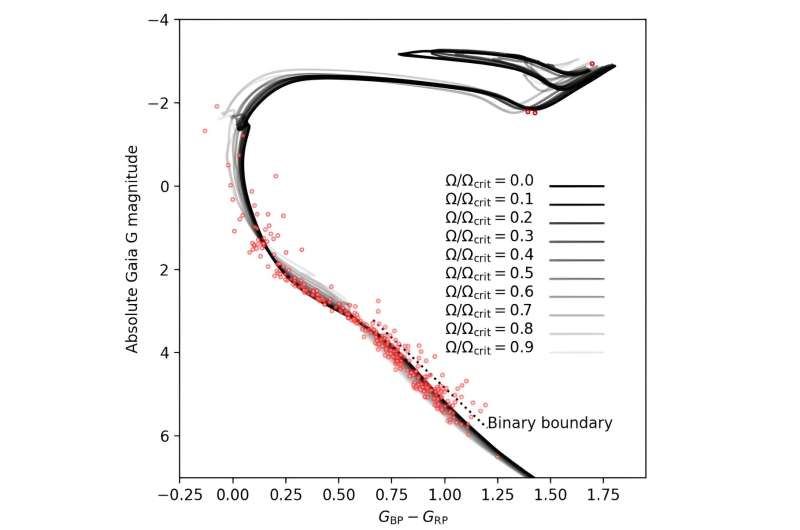December 6, 2023 report
This article has been reviewed according to Science X's editorial process and policies. Editors have highlighted the following attributes while ensuring the content's credibility:
fact-checked
preprint
trusted source
proofread
Astronomers investigate the Southern Beehive cluster

An international team of astronomers has performed the first asteroseismic study of the young open cluster NGC 2516, better known as the Southern Beehive. Results of the study, published Nov. 28 on the pre-print server arXiv, unveil crucial information regarding the properties and stellar content of this cluster.
Open clusters (OCs), formed from the same giant molecular cloud, are groups of stars loosely gravitationally bound to each other. So far, more than 1,000 of them have been discovered in the Milky Way, and scientists are still looking for more, hoping to find a variety of these stellar groupings. Expanding the list of known galactic open clusters and studying them in detail could be crucial for improving our understanding of the formation and evolution of our galaxy.
Discovered almost three centuries ago, the Southern Beehive is a bright and young OC in the southern sky in the constellation Carina. The cluster is located some 1,300 light years away and has a near-solar metallicity, while its mass is estimated to be at least 100,000 solar masses.
Although many observations of the Southern Beehive have been conducted, no asteroseismic study of this cluster has been conducted yet. That is why a group of astronomers led by Gang Li of the Catholic University Leuven (KU Leuven) in Belgium has employed NASA's Transiting Exoplanet Survey Satellite (TESS), ESA's Gaia satellite, and the Fiber-fed Extended Range Optical Spectrograph (FEROS) at ESO's La Silla Observatory in Chile, to perform photometric and spectroscopic observations of this OC.
The main aim of this observational campaign was to detect gravity-mode oscillations in the cluster's early-type main-sequence members.
"We selected the 301 member stars with no more than mild contamination as our sample. We analyzed the full-frame image (FFI) light curves, which provide nearly continuous observations in the first and third years of TESS monitoring. We also collected high-resolution spectra using FEROS for the g-mode pulsators, with the aim to assess the Gaia effective temperatures and gravities, and to prepare for future seismic modeling," the researchers explained.
The observations conducted by Li's team revealed a variety of different types of variable stars in the Southern Beehive. They identified 24 g-mode pulsators (Gamma Doradus or Slowly Pulsating B [SPB] stars), 35 Delta Scuti pulsators, 147 stars with surface modulations, five eclipsing binaries, and three post-main-sequence stars.
For the Delta Scuti stars, the astronomers found that their amplitude spectra are well-ordered when sorted by temperature. It turned out that in cooler stars, a series of frequencies at approximately 21.07/day were observed, while the hotter p-mode pulsators display another series of frequency peaks of around 33/day.
Furthermore, the study found that Gamma Doradus stars in the cluster have internal rotation rates as high as 50% of their critical value, whereas the SPB stars exhibit rotation rates close to their critical rate. The researchers noted that this is significantly faster than the average value for those observed for single pulsators.
The collected data also allowed the team to derive the age and extinction value at 550 nm—they were calculated to be 102 million years and 0.53 mag, respectively.
More information: Gang Li et al, Asteroseismology of the young open cluster NGC 2516 I: Photometric and spectroscopic observations, arXiv (2023). DOI: 10.48550/arxiv.2311.16991
Journal information: arXiv
© 2023 Science X Network



















